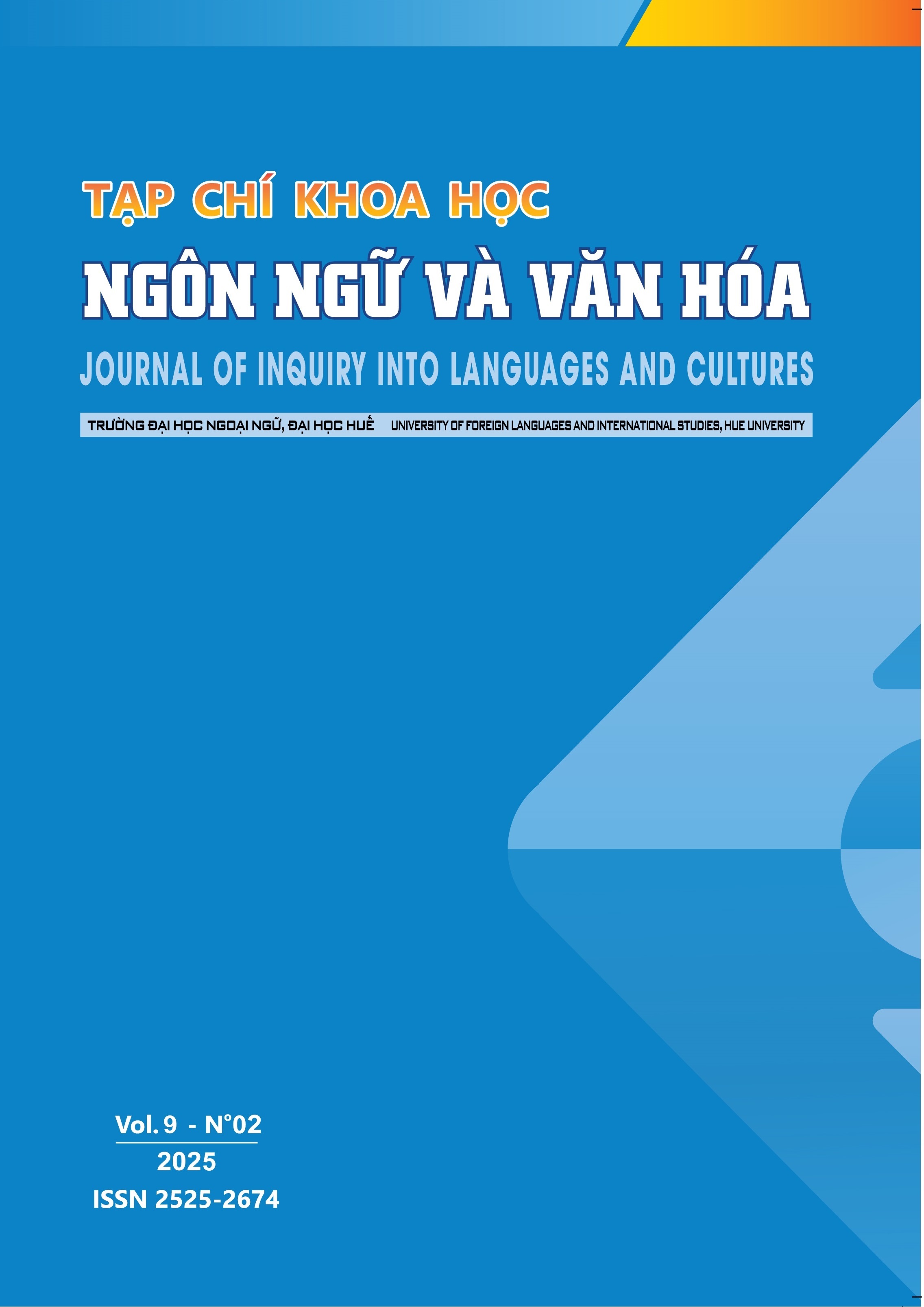A PARALLEL CORPUS ANALYSIS OF TRANSLATION STRATEGIES OF PROPER NOUNS IN “HARRY POTTER”
DOI:
https://doi.org/10.63506/jilc.0902.364Keywords:
Proper nouns, translation strategies, parallel corpus, Harry Potter and the Half-Blood PrinceAbstract
This article examines the strategies used for translating proper nouns in Harry Potter and the Half-Blood Prince from English into Vietnamese. A parallel corpus of the English source text and its Vietnamese translation was built and analyzed using Sketch Engine to extract proper nouns. The analysis applies Fernandes’ (2006) taxonomy of translation procedures alongside Skopos theory (Reiss & Vermeer, 2014) and Venuti’s (1995) domestication–foreignization strategies to interpret translation choices. The findings show seven procedures employed when rendering proper nouns into Vietnamese: rendition, substitution, transcription, recreation, addition, copy, and conventionality. In general, copy (39.89%), rendition (42.11%), recreation (8.59%), and addition (8.31%) were the most frequently used, while substitution (0.55%), transcription (0.28%), and conventionality (0.28%) appeared rarely. The results also reveal that domestication predominated with 216 cases (59.8%), while foreignization was less frequent with 145 cases (40.2%). This indicates that the translator, Lý Lan, tends to adapt names to Vietnamese linguistic and cultural norms.
Downloads
References
Buć, B. (2022). Domesticating vs. foreignizing positions in the translation of proper names from English into Polish and German. Cadernos De Tradução, 42(01), 1–23. https://doi.org/10.5007/2175-7968.2022.e86083
Coillie, J. V., & Verschueren, W. P. (Eds.) (2014). Children’s literature in translation: Challenges and strategies (1st ed.). Routledge. https://doi.org/10.4324/9781315759845
Creswell, J. W., & Creswell, J. D. (2018). Research design: Qualitative, quantitative, and mixed methods approaches (5th ed.). SAGE Publications.
Fernandes, L. (2006). Translation of names in children’s fantasy literature: Bringing the young reader into play. New Voices in Translation Studies, 2(1), 44–57. DOI: https://doi.org/10.14456/nvts.2006.5
Hermans, T. (1988). On translating proper names, with reference to De Witte and Max Havelaar. In M. J. Wintle (Ed.), Modern Dutch studies: Essays in honour of Professor Peter King on the occasion of his retirement (pp. 11–24). London: Bloomsbury Academic. https://doi.org/10.5040/9781474284912.ch-002
Jaleniauskienė, E., & Čičelytė, V. (2009). The strategies for translating proper names in children’s literature. Studies About Languages, 15, 31–42.
Juzelėnienė, S., Petronienė, S., & Kopylova, K. (2016). The translation of proper names from English to Lithuanian in “Steve Jobs” by W. Isaacson. Procedia - Social and Behavioral Sciences, 232, 800–805. https://doi.org/10.1016/j.sbspro.2016.10.108
Mujni, M., & Marlina, L. (2025). Translation techniques of proper names in the novel Girl Who Fell Beneath the Sea by Axie Oh (2022). English Language and Literature, 14(1), 31-41. https://doi.org/10.24036/ell.v14i1.132891
Munday, J. (2016). Introducing translation studies: Theories and applications (4th ed.). Routledge. https://doi.org/10.4324/9781315691862
Newmark, P. (1981). Approaches to translation (Language teaching methodology senes). Pergamon Press. doi:10.1017/S0272263100005222
Newmark, P. (1993). Paragraphs on translation. Multilingual Matters. https://www.multilingual-matters.com/page/detail/Paragraphs-on-Translation/?k=9781853591914
Nguyen, T. M. N., & Phan, T. T. T. (2022). Building an English-Vietnamese parallel corpus of contemporary art terms. Journal of Science, Hue University of Education, 4(64), 5-13. https://vjol.info.vn/index.php/TCKH-DHH/article/view/81824/69722
Nida, E. A. (1964). Toward a science of translating. E. J. Brill.
Nord, C. (1997). Translating as a purposeful activity: Functionalist approaches explained. Routledge.
Nord, C. (2003). Proper names in translations for children: Alice in Wonderland as a case in point. Meta, 48(1-2), 182–196. https://doi.org/10.7202/006966ar
Nyangeri, N. A., & Wangari, R. (2019). Proper names in translation: Should they be translated or not? Eastern African Literary and Cultural Studies, 5(3–4), 347–365. https://doi.org/10.1080/23277408.2019.1680914
Oittinen, R. (2000). Translating for children. Routledge. https://www.taylorfrancis.com/books/mono/10.4324/9780203902004/translating-children-ritta-oittinen
Quang, T. (2005, July 19). Harry Potter và độc giả Việt Nam. Thanh Niên. https://thanhnien.vn/harry-potter-va-doc-gia-viet-nam-185172414.htm
Reiss, K., & Vermeer, H. J. (2014). Towards a general theory of translational action: Skopos theory explained (C. Nord, Trans.; 1st ed.). Routledge. https://doi.org/10.4324/9781315759715
Strawson, P. F. (1950). On referring. Mind, 59(235), 320–344. http://www.jstor.org/stable/2251176
Trieu, T. H. (2018). Translating proper names in a literary text: A case of Harry Potter novel in Vietnam. VNU Journal of Foreign Studies, 34(2). https://doi.org/10.25073/2525-2445/vnufs.4245
Venuti, L. (1995). The translator’s invisibility: A history of translation. Routledge.
Xu, S., & Xu, H. (2024). Advances in corpus applications in literary and translation studies. The International Journal of Translation and Interpreting Research, 16(1), 166–168. https://doi.org/10.12807/ti.116201.2024.r01
Yang, W. (2010). Brief study on domestication and foreignization in translation. Journal of Language Teaching and Research, 1(1), 77-80. https://doi.org/10.4304/jltr.1.1.77-80














